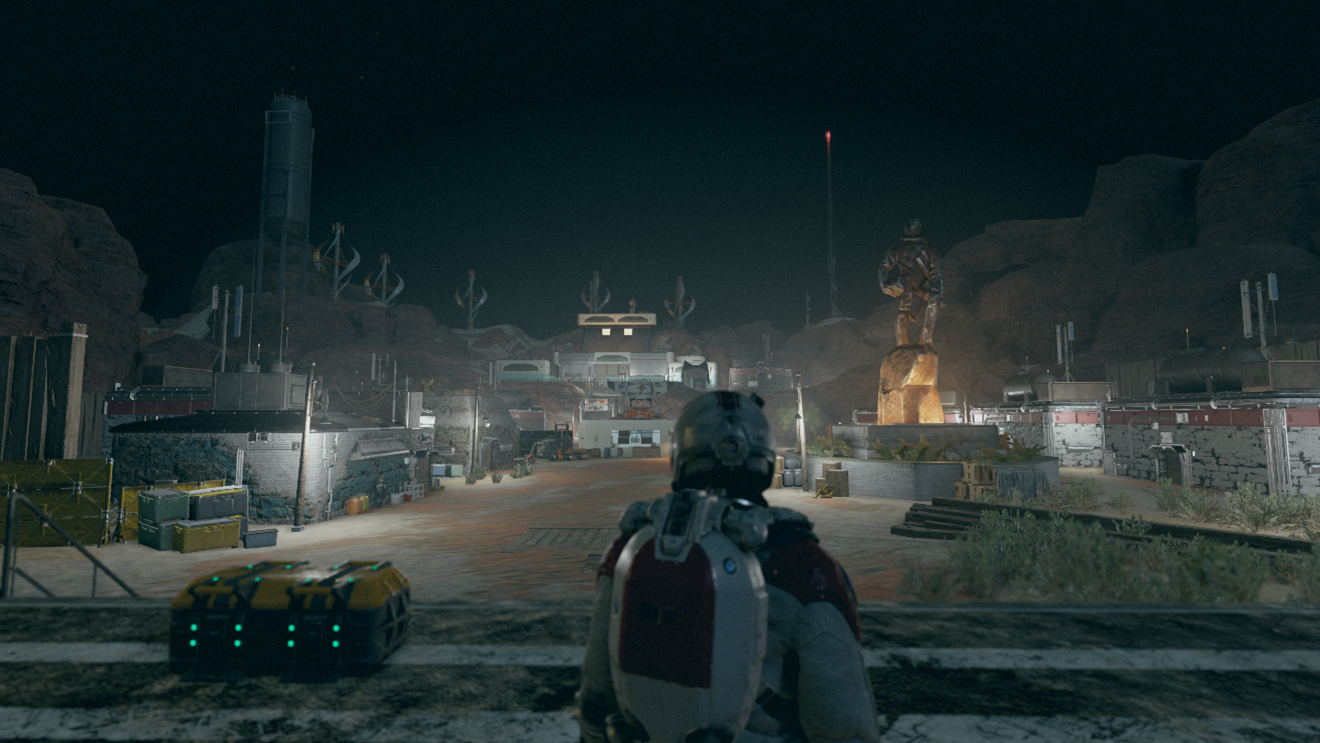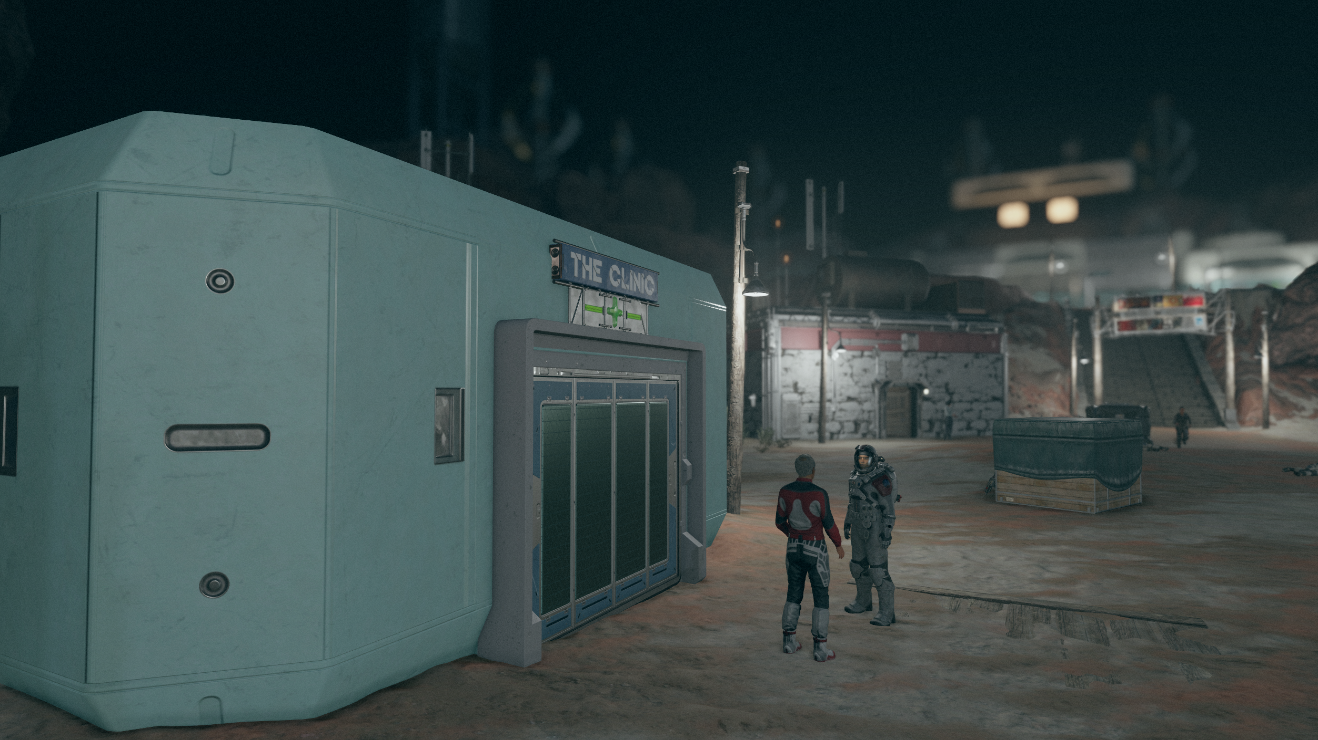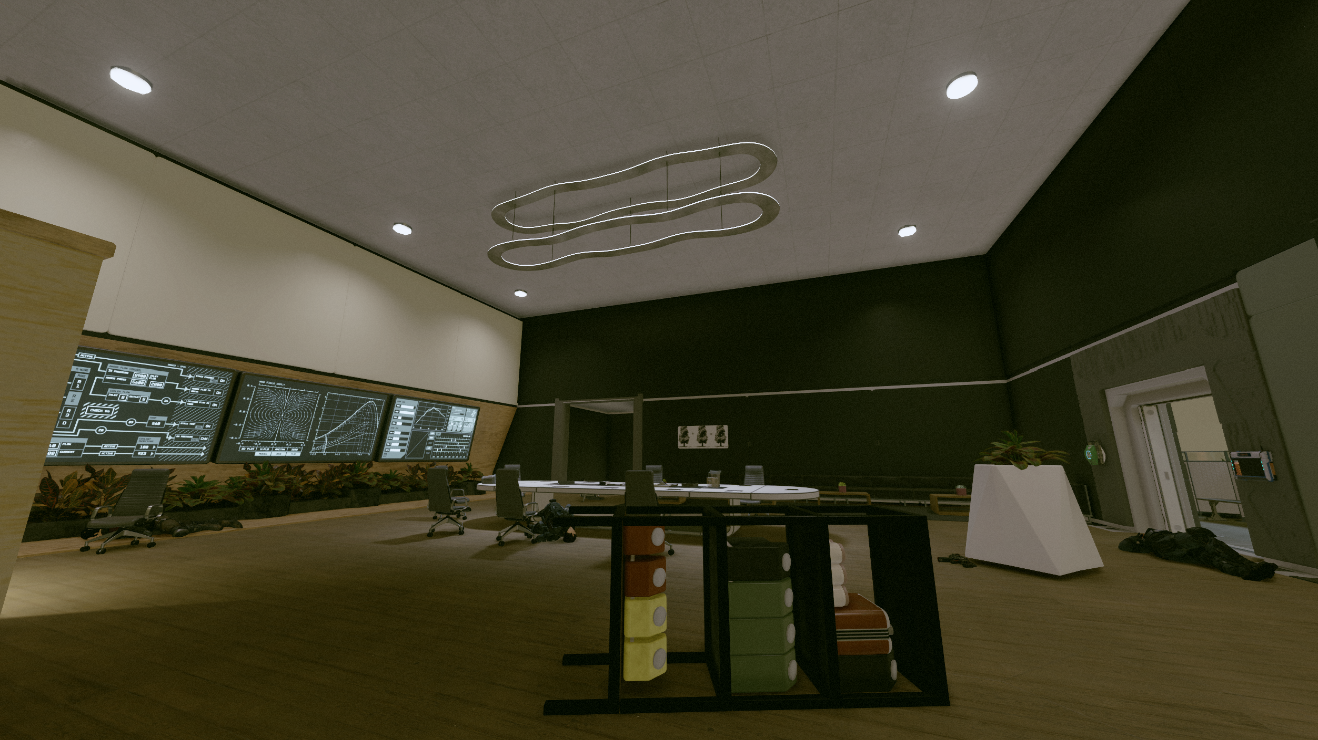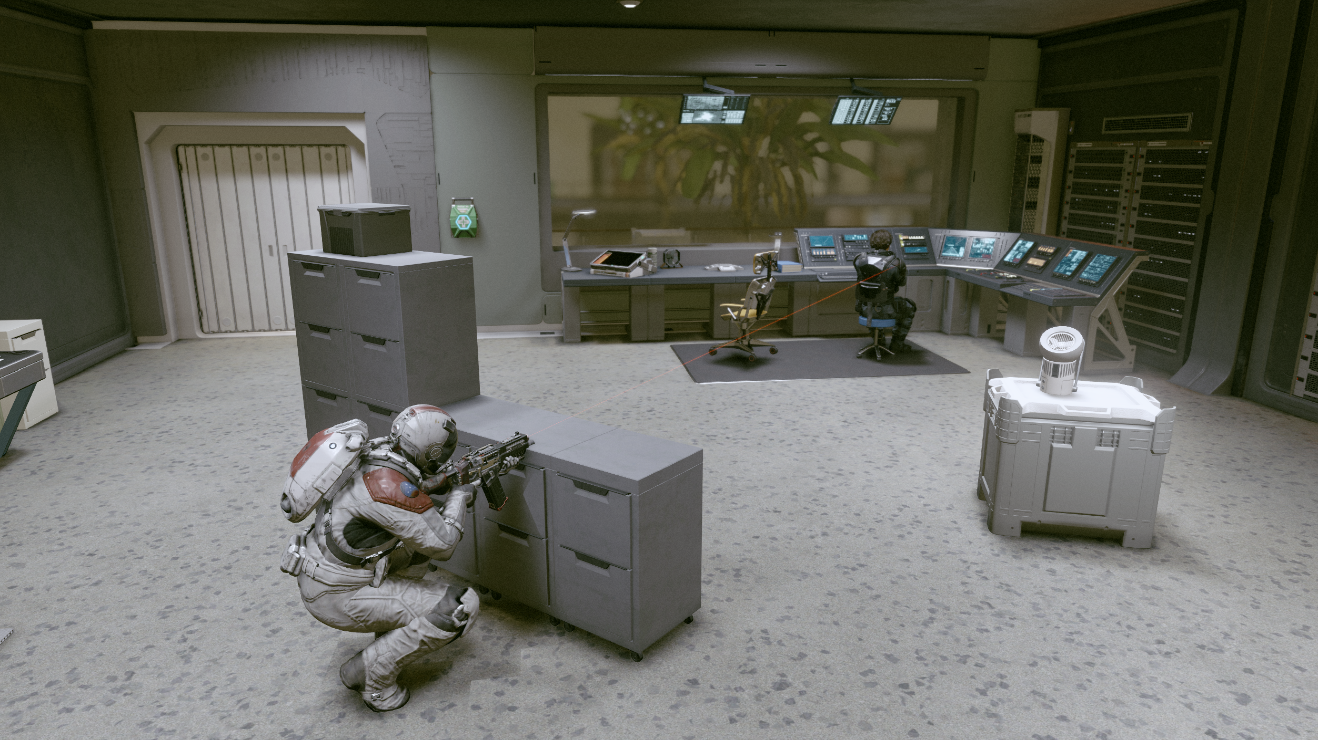
A Starfield Quest
Justice Violence is a single-player Starfield level that the player needs travels to the village to investigate the violent incidents, discovering that the riot was caused by a corporation led by Raymond. Players can use mechanics such as theft, persuasion, lockpicking, and stealth to approach the quest in different styles. The level was designed and developed solo over the course of approximately 6 months.
Justice Violence
Playthrough Video
Design Goals
Immersive Story & Optional Dialogue
Each NPC features extensive dialogue that reveals the story, alongside collectible optional notes for deeper worldbuilding.
Meaningful Choices
The ending presents tough decisions with no perfect outcome, reinforcing the emotional weight of the narrative.
Layered Environmental Storytelling
In-Game Logs as Narrative Anchors
Used logs and text entries to reveal character traits and hint at past events, enriching world-building through indirect storytelling.Interactive Follower System
Introduced a companion character who:
➤ Explains key log content
➤ Responds to player follow-up questions, adding depth and clarity to discoveries.Immersive Discovery Flow
Logs on corpses auto-open via scripts, ensuring smooth, uninterrupted gameplay.
Design promotes curiosity, contextual immersion, and active engagement with the story.
WHAT WENT WELL?
Rich NPC Dialogue & Narrative Freedom
Designed distinct personalities and speech styles for each NPC.
Created special dialogue options and layered question trees to fully engage narrative-driven players.
Enabled meaningful player choice in conversations.
Strong Visual Framing in Exterior Design
Used landmarks and layout adjustments to create clear visual hierarchy.
Players can immediately recognize both their current objective and end goal.
Achieved a realistic, readable, and immersive environment.
Well-Scoped Level Design
Referenced past Fallout 4 student levels to calibrate scope realistically.
Adapted based on feedback from Professor and playtests.
Final version hit a balance between ambition and feasibility, avoiding cut content or overextension.
Skill-Based Interactions
Special dialogues and actions respond to the player's level and skills, including stealth, intimidation, and persuasion.
Player Companion
Provides combat support and helps the player better understand the backstory and storyline progression.
Goal
Environmental Storytelling & Visual Framing
Guided Focus Through Lighting & Props
Used dynamic lighting and object placement to draw player attention toward key landmarks.Focal Landmark: Central Statue
A large statue immediately captures attention, anchoring the player's understanding of the village layout.Two-Layered Spatial Design
Hilltop Goal: The main building sits on a hill, clearly indicating the end objective.
Downhill Objective: The next immediate goal is visible in the foreground, creating a clear and compelling progression path.
Narrative-Driven Level Design Highlights
Rich NPC Interaction
Every NPC is distinctly written with optional dialogue trees and collectible text logs, catering to narrative-driven players.Freedom in Gameplay
Supports multiple playstyles like lockpicking, persuasion, and stealth, encouraging non-linear solutions to challenges.Meaningful Choices, No Perfect Endings
The ending presents an emotionally complex dilemma with no clear right or wrong, prompting player reflection and lasting impact.Intuitive World Navigation
Thoughtful use of conveyance and sightlines ensures players are naturally guided without losing the freedom of exploration.
Deep, Optional NPC Interactions
Multi-Layered Dialogue System
Designed optional NPCs with branching dialogue trees, offering both main plot insights and casual worldbuilding conversations.Character-Driven Design
Players can explore each NPC’s motivations and personality through natural, structured dialogue flow.Context-Rich Exploration
Secondary dialogue paths reveal hidden lore and additional context, encouraging deeper engagement.
Design
Clear Visual Guidance & Player Conveyance
Framing Through Environment
Used strategic tree placement to frame key spaces and draw attention in the first interior scene.Dynamic Sightline Cues
A retreating boss (via custom AI behavior in Creation Kit) intuitively signals the next objective area.Visual-Driven Objective Clarity
Scripted door with red/green light indicators communicates interactivity and status.
A red wire visually links the door to the control room, guiding player movement without intrusive UI prompts.
Balanced Freedom with Focused Design
Multiple Approaches, No Missed Content
Originally planned skill-based content access was reworked to preserve crafted experiences and prevent gameplay issues.
➤ Final design allows freedom in approach, while keeping core interactions intact.Example: Key Retrieval Scenario
Players can negotiate, pickpocket, or intimidate a security guard — but all paths are anchored to the same character, ensuring clarity and narrative cohesion.Subtle Player Guidance
Used indirect phrasing (“find a way to acquire the key”) instead of commands.
Environmental cues (e.g., placed items) subtly hint at stealth options without forcing a specific choice.
Looping Interior Layout for Improved Flow
Early Issue: The initial design lacked a right-side path, leading to unbalanced pacing and reduced engagement.
Solution:
➤ Expanded layout with connected hallways and explorable rooms on the right side.
➤ Created a looping structure, enhancing player flow, navigation variety, and a sense of spatial completeness.Result: A more dynamic, balanced, and rewarding indoor experience that encourages exploration.
WHAT WENT WRONG?
Poor Stakeholder Communication
Although my Professor provided consistent feedback at each milestone, I often failed to track and implement those suggestions.
Many points were forgotten or overlooked due to time pressure and lack of prioritization.
Inefficient Exterior Iteration
Spent too much time repeatedly reworking the exterior layout, leading to slow progress.
Each revision required extensive adjustments to flow, pacing, and scripting, often resulting in bugs and discarded work.
This trial-and-error approach was less efficient than starting fresh or working from a clear structure early on.
Linear Mindset in an Open-World Game
I initially approached the project with a linear design mentality, which clashed with Starfield’s open-world philosophy.
The quest flow ended up being too restricted, and players found unintended shortcuts, revealing flaws in flexibility.
I now recognize the importance of embracing open-ended structure and designing with player freedom in mind from the start.
WHAT I LEARNED?
Rich NPC Dialogue & Narrative Freedom
Designed distinct personalities and speech styles for each NPC.
Created special dialogue options and layered question trees to fully engage narrative-driven players.
Enabled meaningful player choice in conversations.
Strong Visual Framing in Exterior Design
Used landmarks and layout adjustments to create clear visual hierarchy.
Players can immediately recognize both their current objective and end goal.
Achieved a realistic, readable, and immersive environment.
Well-Scoped Level Design
Referenced past Fallout 4 student levels to calibrate scope realistically.
Adapted based on feedback from Professor and playtests.
Final version hit a balance between ambition and feasibility, avoiding cut content or overextension.












